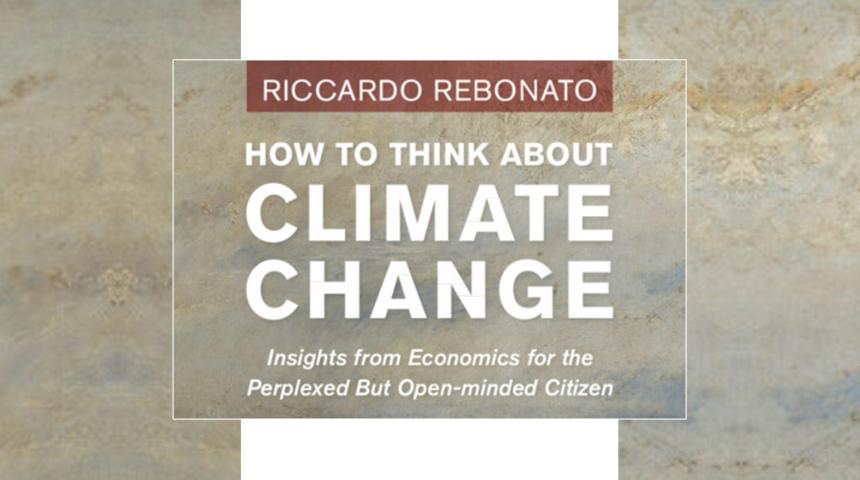Harrison Hong
The students that I taught are unique in a number of ways. Some are already seasoned investment professionals and others have even had multiple successful careers. Their maturity and experience differ markedly from those of the typical PhD student who is fresh out of college or for that matter even of a typical MBA student who has had only a few years of work experience. Perhaps as a result, the students I had conveyed a more pure “learning-for-learning’s sake” enthusiasm for the class and the material. This was an unexpected and delightful experience for me."

"The students that I taught are unique in a number of ways. Some are already seasoned investment professionals and others have even had multiple successful careers. Their maturity and experience differ markedly from those of the typical PhD student who is fresh out of college or for that matter even of a typical MBA student who has had only a few years of work experience. Perhaps as a result, the students I had conveyed a more pure “learning-for-learning’s sake” enthusiasm for the class and the material. This was an unexpected and delightful experience for me."
What areas have you been researching and what is your current focus?
I have worked on a number of different areas including behavioural finance and stock market efficiency; asset pricing and trading under market imperfections; incentives and biases in decision making; organisational form and performance; social interaction and markets, and firm externalities and markets for corporate responsibility.
Over the last decade, I have done a lot of work on asset pricing models based on differences of opinion, which arise when investors agree to disagree about fundamental value. This differences-of-opinion assumption is a reduced form for bounded rationality, model-based learning or psychological biases such as overconfidence. This approach yields simple and tractable models that better match stylised facts about asset price and trading volume dynamics than those based on risk sharing or liquidity. Changes in opinions can indeed lead to large trading volume. When there are short-sales constraints, dispersion in opinion leads to overpricing and asset price bubbles in which investors value an asset not only for its fundamental value but also for its resale option. Corrections to over-pricing arise due to increased supply. Crashes can periodically occur as hidden information regarding pessimists’ valuations due to short-sales constraints are revealed when optimists’ valuations fall. Leverage can amplify deviations of price from fundamental value as pessimists lend money to optimists. Disagreement and bubbles tend to arise during times of technological innovations. And diffusion of opinions with the spread of news leads to rich price-and-volume dynamics that match the earnings and price momentum anomalies. Trading volume emerges as a potentially important valuation and risk metric.
You are the latest recipient of the Fischer Black Prize, a prize awarded biennially by the American Finance Association to the young scholar “whose body of work best exemplifies the Fischer Black hallmark of developing original research that is relevant to finance practice.” How is your research relevant to practitioners?
My research has had both expected and somewhat unexpected impact on practitioners. On the expected front, my research in behavioural finance argues that much of what drives expected return and risk in financial markets is non-fundamental in nature, driven by the speculative trading of investors. As a result, asset returns are predictable using a variety of metrics ranging from trading volume to speed with which news diffuses across the investment community. My work here in providing a firmer theoretical and empirical foundation for understanding asset price movements is naturally used by hedge funds and other money managers (particularly by those that tilt towards using quantitative models to predict risk and return) in their investment decisions.
My work on how incentives and reputational concerns bias the decision making of agents in financial markets has been used by investors to discern and adjust for the biased forecasts of economic forecasters and by shareholders to understand how incentives influence the risk-taking of finance firms. My work on the diseconomies of scale in the mutual fund industry and how it is influenced by organisational form is used by asset management companies. And most recently and unexpectedly, my work on the economics of socially responsible investing in showing that sin stocks trade at low prices and earn abnormal risk-adjusted returns because they are shunned or discriminated against by socially responsible investors has shaped how the socially responsible investing community think about the risk and returns of their investment.
As part of the programme’s doctoral workshop series, you presented a working paper on gradual information diffusion in asset markets. How is this paper related to your key research areas, what did you look at exactly, and what are the implications of your results?
The paper is part of a decade-long research agenda in trying to understand the determinants of stock price momentum and tries to see how social interaction or word of mouth influences price drift in markets. The paper develops a model of opinion and price-volume dynamics based on a word-of-mouth communication process widely used in epidemiology. Risk-averse investors have different opinions depending on whether they heard the news from a friend. Opinions initially diverge and then converge over time as news spreads, which leads to price adjustment and trading volume. News released to many leads to an expected diffusion rate that declines with time. But news initially released to few leads to an expected diffusion rate that initially increases in time and only then decreases. The serial correlation of stock returns and trading volume are proportional to the diffusion rate. The term structure of the serial correlation of non-overlapping returns can be declining or hump-shaped in time depending on whether the news was widely released. The paper tests and verifies these predictions and shows that this model is useful for understanding news and price momentum and the dynamics of investor and analyst expectations around media events. The model and the empirical results can be used to better exploit price- and earning-momentum in active portfolios.
Your elective is dedicated to behavioural finance. What would you say are the main insights of behavioural finance, and to what extent can they be included in asset pricing, portfolio construction, or risk management models?
The main insight is that non-fundamental or speculative factors matter greatly in shaping the risk-return trade-offs that we are all familiar with from finance 101. These factors are first-order and force a rethinking of the types of variables we consider in modelling asset price movements. Rather than estimating cash flow or consumption beta, behavioural finance and the disagreement framework suggest focusing on speculative factors such as trading volume or gradual information diffusion factors such as analyst coverage. These factors tend to be persistent and influence not only short-term price fluctuations but even returns over very long horizons. Behavioural finance research over the last two decades indicates that these sorts of non-fundamental risks can be modelled and estimated and hence my belief is that in the not-too-distant future, these sorts of behavioural finance analyses which are currently being considered only by the most sophisticated of investors will gradually be incorporated by more and more investment professionals as these materials are increasingly adopted in classrooms.
How would you describe your experience teaching this class?
I had a good time teaching the course. The small class size plus the enthusiasm of the students made the class feel more like a seminar than the usual classroom lecture. Because there were so many questions and interactions, I was able to go off the syllabus for a good part of the course, which I think greatly enhanced the experience for the students. I was impressed that the students were able to process such a large amount of new and sophisticated material in such a short time. Perhaps the best acid test is that I still keep in touch of some of the students regarding their work.
Are these doctoral students different from those you are used to?
The students that I taught are unique in a number of ways. Some are already seasoned investment professionals and others have even had multiple successful careers. Their maturity and experience differ markedly from those of the typical PhD student who is fresh out of college or for that matter even of a typical MBA student who has had only a few years of work experience. Perhaps as a result, the students I had conveyed a more pure “learning-for-learning’s sake” enthusiasm for the class and the material. This was an unexpected and delightful experience for me.
You have been an associate editor of the Journal of Finance for four years. What does this role entail and what advice can you offer to researchers who target top journals for publication?
My job as an associate editor is mostly to give the editor a gut-reaction first-take on a submission as to its originality and whether the contributions merit publication in the journal and to suggest appropriate referees. My advice does not differ too much from the usual, except my taste is for papers that are simple and for clear ideas and exposition. With work, even very complicated ideas can be made simpler and dense prose be made more digestible. Simplicity and clarity certainly make it much easier for referees, associate editors and editors to evaluate a submission.



